Project for the planning, protection and valuation of water and the landscape in Antioquia.
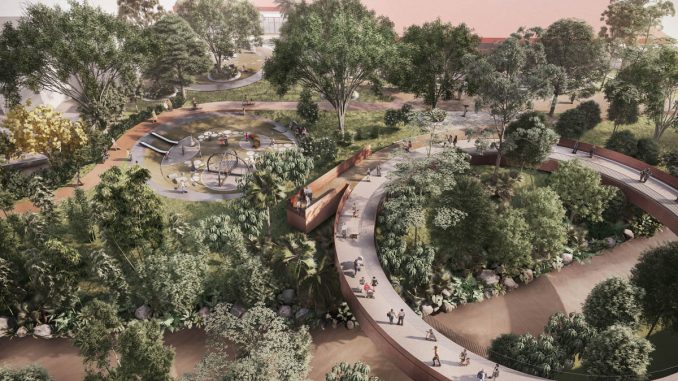
Antioquia’s Municipal River Parks is a strategic project / program for structuring, encouraging and building guidelines, guidelines and development of master plans, public space and landscape projects that seek to protect, conserve, educate and value the waterfronts, water courses and human settlements around them. It is a regional and territorial strategic vision to implement plans to understand and return the habitat to nature in water environments, respecting them and valuing their natural conditions. This project is structured as a long-term vision, where change begins now, and we hope that the results at different scales will be consolidated over time. This program intends and seeks to be a paradigm shift in the way we understand and have planned our territories around one of the most valuable resources for our subsistence as a species: water. This, then, is a project for the protection of life, and to change the dynamics in which we interact with these natural resources.
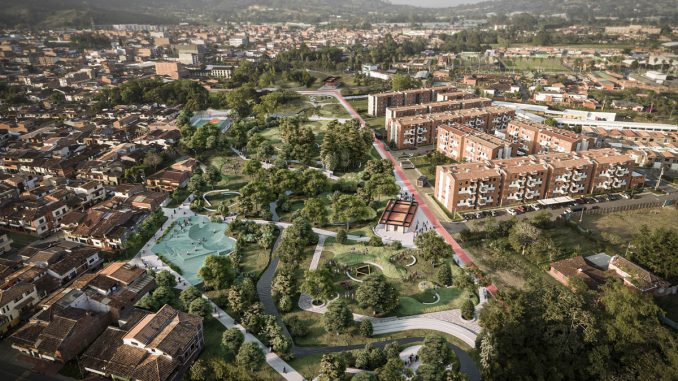
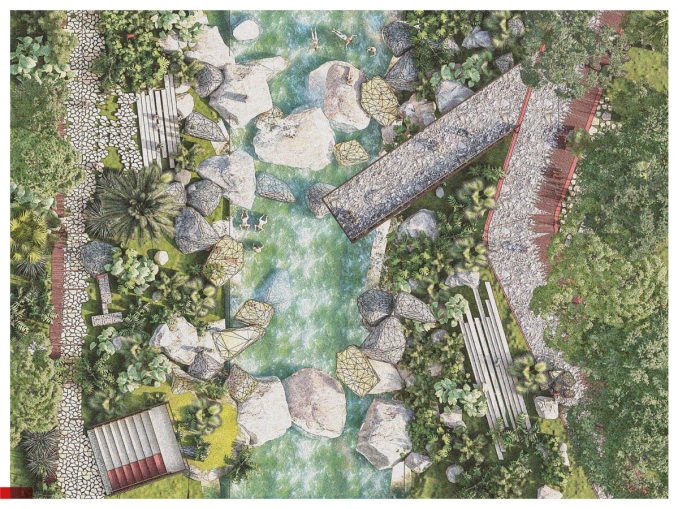
1.The MUNICIPAL RIVER PARKS Strategic Project:
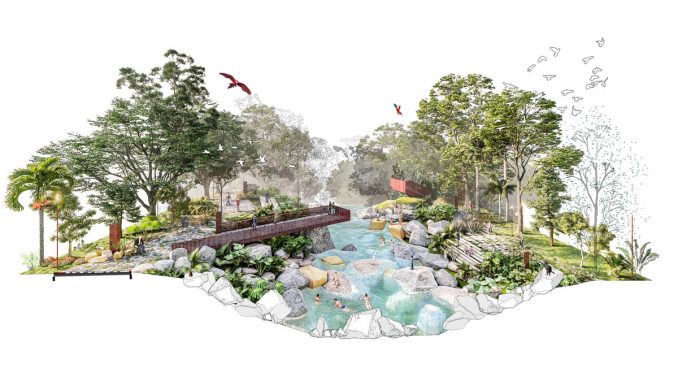
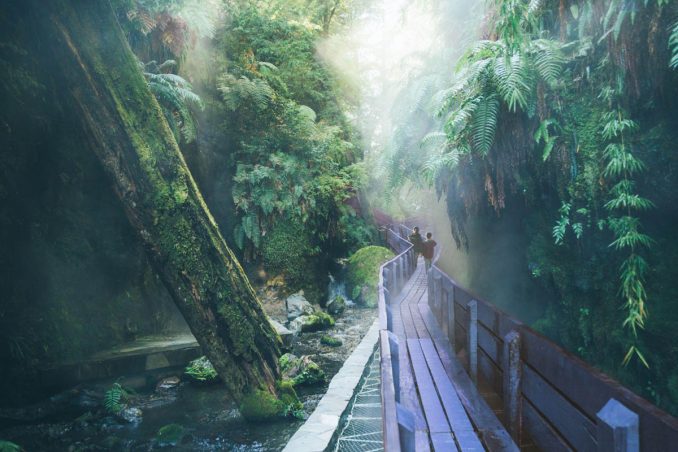
Antioquia Municipal River Parks is one of the flagship programs of our current administration, in which we are committed to projects that seek to recover and transform our waterfronts into greener spaces for the enjoyment and healthy recreation of the community where a strong relationship of the inhabitants with the natural environment and the biotic life of the rivers and streams that are affected by the landscaping intervention is evident. This strategy seeks to generate quality public spaces, mitigate risks associated with climate change and promote new social, environmental, cultural and sports dynamics around the waterfronts, generating spaces that enable citizen enjoyment, the ecological recovery of the rivers, consolidating environmental, social, economic and community initiatives. This promotes and encourages reconciliation between the urban habitat and the bodies of water, where rivers become the structuring axis for urban transformations and, therefore, an essential part of the cultural encounter and exchange. The project is also an essential part of the implementation of the policy declared in Antioquia as the climate emergency, as an action to mitigate, prevent and address in all possible aspects this situation that is affecting more and more territories every day.
2.1 General Objective of the program:
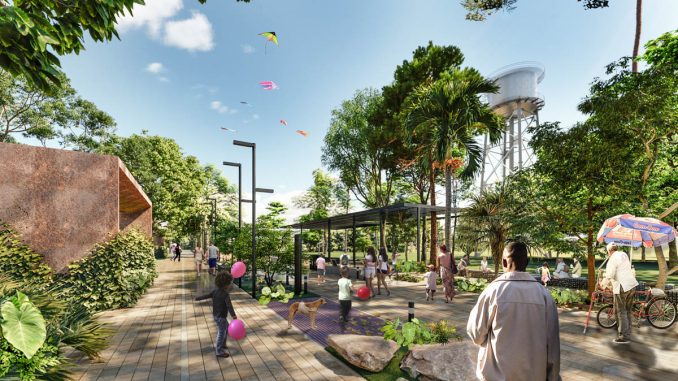
Structuring criteria and guidelines
Encourage, structure and promote master plans and public space designs for the development of projects for the recognition, valuation, contemplation and recovery of the systems associated with the bodies of water in the municipalities and sub-regions of Antioquia through three lines of action: Environmental Recovery: Improving water quality, protection, conservation and reforestation of water bodies, silvipastoral management, watershed protection and management of human settlements along riverbanks. Seeking to integrate Public Space and Landscaping: Quality and inclusive public space, passive recreation corridors, linear parks, sustainable interventions with low environmental impact, landscaping that improves environmental conditions and strengthens community-nature relations. Creating a culture of landscape and valuing public space around nature. Environmental Education: Appropriation of environmental spaces, education through water and its care, infographic public space for the recognition of the natural territory. The program promotes education as the main element of change for the proper care and appropriation of water resources. Environmental education as the main social link for change in the protection of our water resources.
2.2 Specific Objectives of the program:
Strategic design guidelines
Generate sustainable and quality public spaces:
- 80% Landscape Vs 20% Built.
- Site Materials and Landscape.
- Building with the Built.
- Furnishings for passive recreation.
- Enhance comfort conditions in public spaces.
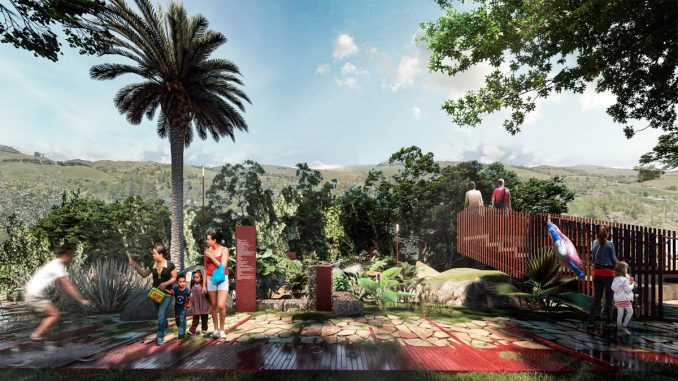
Recognize and value water bodies:
- Recovery of the endemic landscape.
- Valuation of the fauna and the ecosystem.
- Reforestation programs.
- Cultivation and community self-management.
Mitigate risks associated with water bodies:
- Prevent encroachment into flood zones of water bodies and contain urban sprawl through public space projects.
- Guarantee sewage mesh and systems with outflows to treatment plants to mitigate contamination of water bodies.
- Control and education on solid waste in rivers and streams.
- Environmental awareness through observation from public spaces and signage.
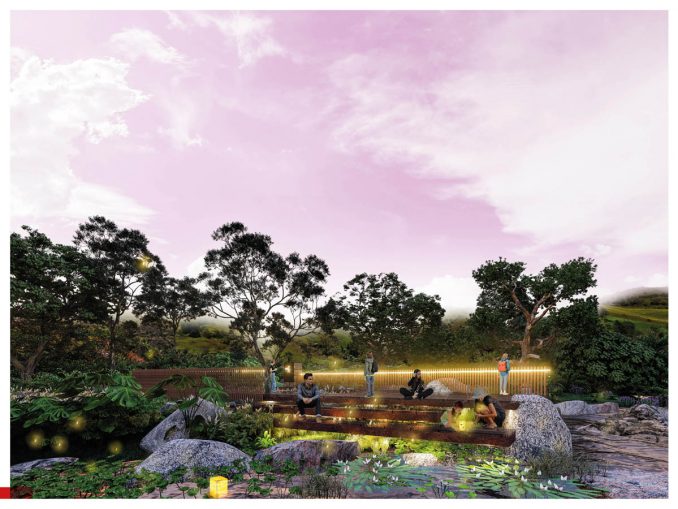
Improve water quality:
- Phyto-Re mediation systems.
- Collection from sewage systems.
- Gray water treatment.
- Education for water valuation.
- Citizen participation for solid waste collection.
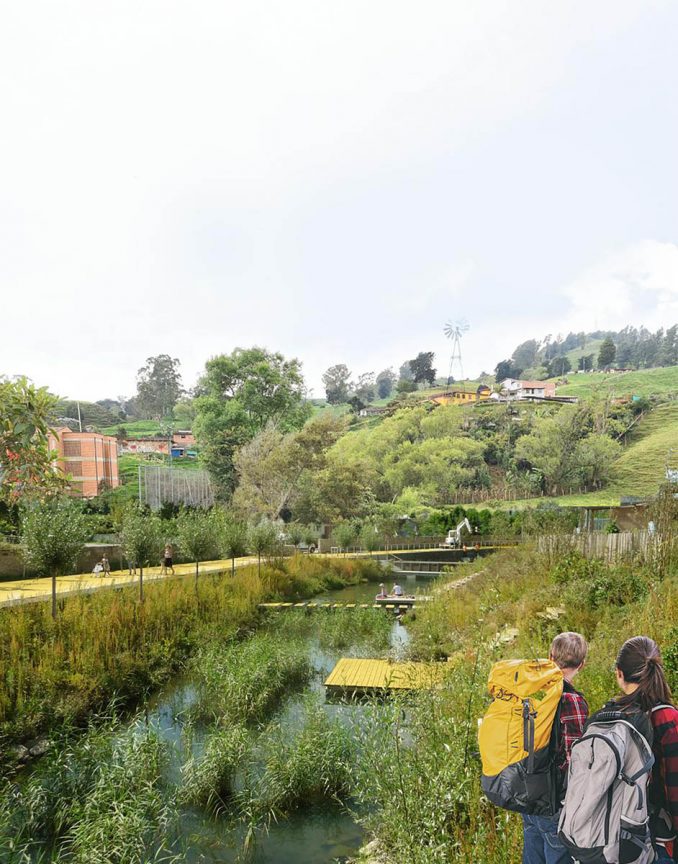
Ensure ecological connectivity:
- Landscaping associated with food to strengthen the biotic system.
- Education with monitoring systems.
- Observatories of fauna associated with water bodies.
- Birdwatching viewpoints.
- Educational signage based on biotic exposure.
- Connecting biotic corridors in different directions with light and sensitive structures.
To recover the landscape essence of the place:
- Understanding ecosystems
- Strengthening through reforestation.
- Landscape associations for the attraction of biotic networks.
- More landscaping than architectural interventions.
Ensure urban and rural mobility:
- Pedestrian access to public space
- Cross-urban pedestrian and biotic connectivity.
- Categorize urban and public space systems on a municipal basis.
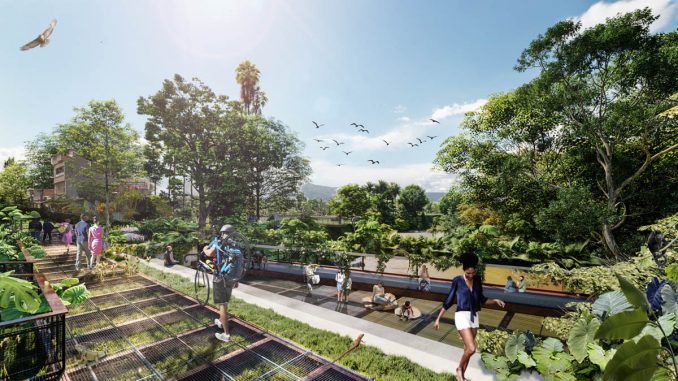
Build community facilities associated with water bodies:
- Equipment related to water education and valuation.
- Wildlife observatories
- Viewpoints and meeting spaces.
- Picnic areas.
- Spaces for yoga and meditation with the landscape.
- Citizen meeting places
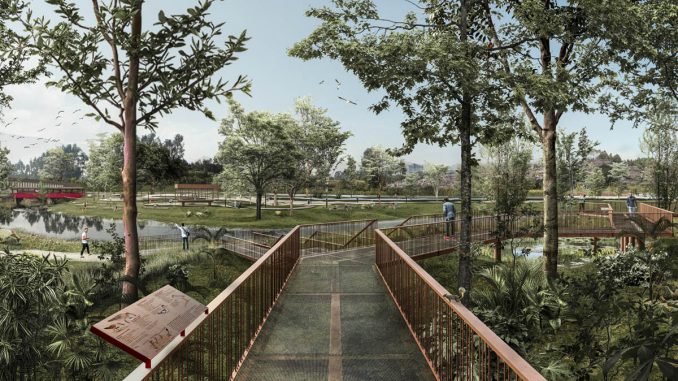
Improve eco-tourism and the economy in the municipalities:
- Paths of contemplation.
- Activities related to water and biodiversity.
- Eco-tourism associated with water bodies.
- Education through signage
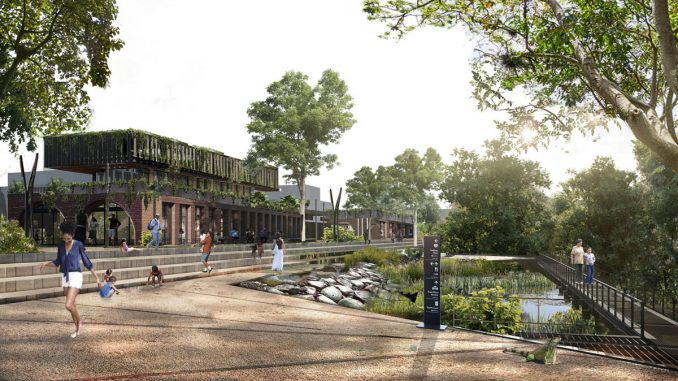
To propose emission-free mobility systems:
- Spaces for walking and staying in the public space.
- Encourage the use of bicycles and other means of active transportation.
- Priority to public and community transportation.
- High occupancy cargo and private transportation.
- Private motorized transportation
- Implementation and development
During this period, we have worked with 13 municipalities of the Department with projected interventions that reach 180,000 m2 of public space and joint investments between the Government and municipalities of approximately COP 90,000,000,000,000. The program is reaching interventions of all kinds of scales, territorial planning, implementation of pilot projects for immediate activation, environmental development for watershed protection, and others, in which together with each municipality, each action and strategic guidelines are structured for the development of each specific need. In this way, we are looking for all kinds of strategies that allow us to get closer to a good management of these water resources.
IDEALS
Based on the Land Management Plans and their occupancy models as a premise, the Antioquia Municipal River Parks program is projected as a strategy and action to adapt to climate change, where actions are derived from it that are focused on transportation oriented to urban development, reduction of emissions and carbon footprint, urban biodiversity, reduction of heat island and main problems associated with water fronts, such as: Uncontrolled waste discharges, concealment of rivers, degradation of water quality and destruction of sources and supplying basins that end up translating into emergencies, landslides, floods, overflows.
River Parks as a strategy aimed at “Giving life back to the river and the river to the city and its inhabitants” will seek to consolidate itself as a corridor with associated ecological systems that offer urban vitality and become the epicenter of the public space of each municipality, a strategic bet to reconcile and protect the territory and our habitats in the long term.
Municipal river parks, the project that seeks to look at the water again, and thus enhance the value of life.
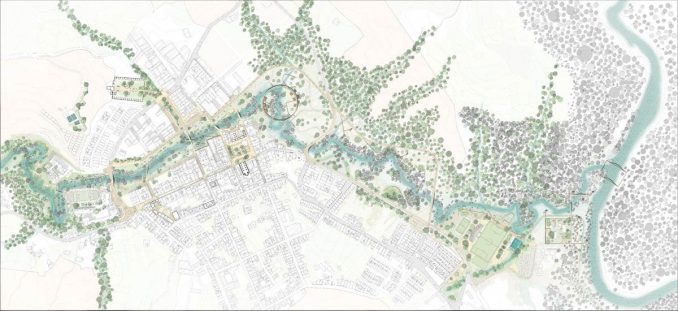
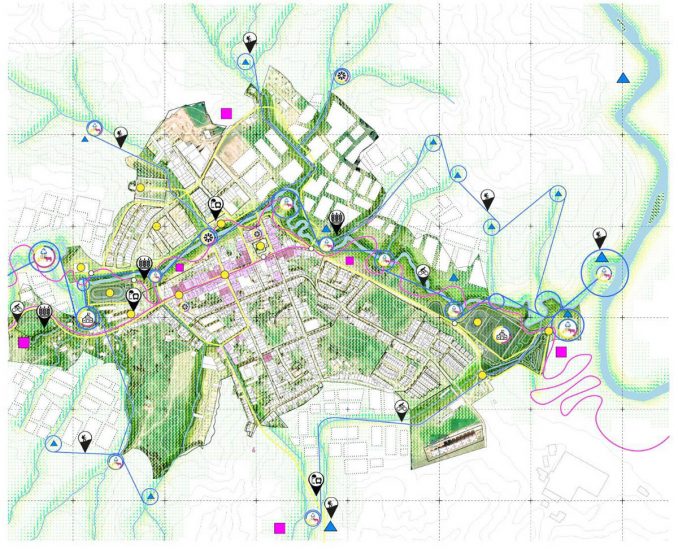
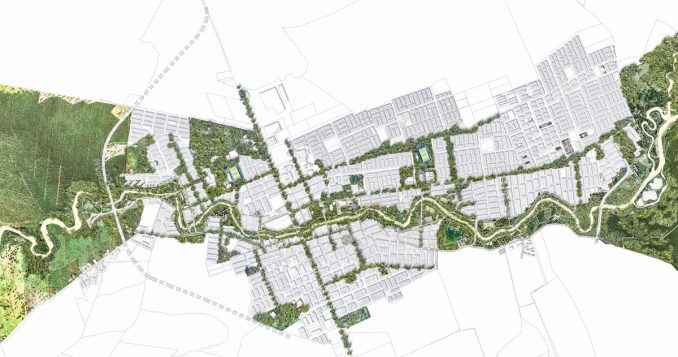
Antioquia Municipal River Parks | Gobernacion De Antioquia / Juan Pablo Lopez – Sebastian Monsalve Gomez
Designers: Gobernacion De Antioquia / Juan Pablo Lopez – Sebastian Monsalve Gomez
Design Team:
Gobernacion de Antioquia / Intitution
Juan Pablo Lopez / project management and structuring
Sebastian Monsalve Gomez / Landscape architect, program Leader
Collaborators/Other Consultants:
Promoting entity: Gobernación de Antioquia.
Management team: Secretario regional y Sectorial Juan Pablo López
Secretario de infraestructura Santiago Sierra Latorre.
Directora Operativa Luisa Gomez
Coordinador Social de la Secretaría de Infraestructura Física Diego Pérez Asesor de Planeación Jorge Pérez
Structuring, design and monitoring team: Asesor y director de estructuración y diseño Sebastián Monsalve Gomez (Cauce arquitectura del paisaje) Coordinador y arquitecto de Seguimiento Daniel Peláez Gomez
Arquitecto de estructuración y diseño Sebastián González Bolivar
Municipalities part of the program:
Municipio de Apartadó
Felipe Benicio Cañizales Palacios
Municipio de Rionegro: Rodrigo Hernández Alzate
Municipio de Caldas Mauricio Cano Carmona
Municipio de Donmatías Yeison Camilo Correa Álvarez
Municipio de Entrerríos Weimar Villa Tobón
Photography: Gobernación de Antioquia.
Renders and drawings: Gobernación de Antioquia + Design teams part of the program
La Ceja
Nelson Carmona Lopera
Concepción
Gustavo Alonso Lopera
Equipos de diseño parte del Programa:
Municipio de Apartadó
ETLLC Arquitectura – Am Pm Arquitectura
Municipio de Rionegro:
EMS Arquitectos – R.A Rojas Arquitectos – TAP Arquitectura – 1/25 Arquitectos – Juan Manuel Bernal Arias Arquitecto – COSME Arquitectura Paisaje.
Municipio de Caldas
Concavas SAS – Birdo|Versal – Nicolas Hermelin
Municipio de Donmatías Connatural
Municipio de Entrerríos LAND – Entropía
La Ceja del Tambo Taller Síntesis
Concepción
Gobernación de Antioquia / cauce arquitectura del Paisaje
